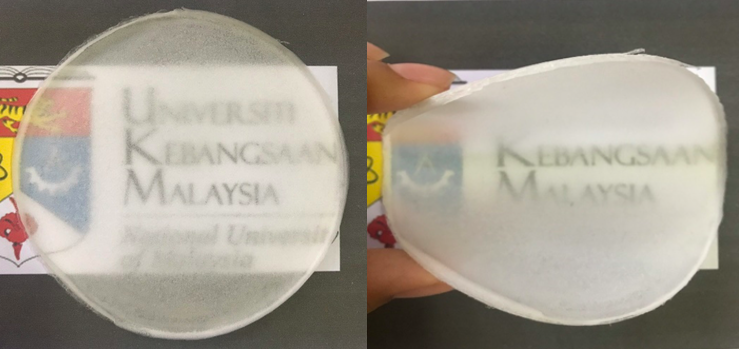PENCIRIAN ELEKTROLIT POLIMER PEPEJAL POLI(PROPILENA GLIKOL)-POLI(L-ASID LAKTIK) DENGAN CECAIR IONIK 1-BUTIL-3-METILIMIDAZOLIUM KLORIDA
Elektrolit polimer pepejal; poli(propilena glikol); poli(L-asid laktik); cecair ionik; kekonduksian ionik
Abstract
Abstrak
Elektrolit polimer pepejal (EPP) berasaskan poli(propilena glikol)-blok-poli(L-asid laktik) (PPG-PLLA) sebagai hos polimer dan 1-butil-3-metilimidazolium klorida, [Bmim]Cl sebagai cecair ionik dihasilkan dan dicirikan dalam kajian ini. Agen gandingan heksametilena diisosianat dan mangkin timah(II)-etilheksanoat turut digunakan dalam penyediaan EPP. Sampel telah disediakan dengan kaedah pengacuanan larutan dan [Bmim]Cl divariasi dari 0 hingga 50 bt.%. Kesan penambahan [Bmim]Cl telah dikaji ke atas interaksi kimia, kekonduksian ionik, kekristalan dan morfologi bagi EPP PPG-PLLA/[Bmim]Cl. Analisis spektroskopi jelmaan Fourier inframerah menunjukkan anjakan nombor gelombang kumpulan berfungsi C=O, C-O dan regangan CH3-N bagi hos polimer yang menunjukkan berlakunya interaksi antara hos polimer dan cecair ionik. Analisis kekonduksian ionik EPP PPG-PLLA mencapai nilai yang tertinggi iaitu 1.22 x 10-5 S cm-1 pada 20 bt.% [Bmim]Cl. Peratus kehabluran PPG-PLLA dapat diperhatikan berkurang dengan penambahan cecair ionik melalui analisis pembelauan sinar-X. Analisis morfologi menunjukkan dengan kehadiran cecair ionik, EPP mempunyai permukaan yang lebih homogen.
Kata Kunci: Elektrolit polimer pepejal, poli(propilena glikol), poli(L-asid laktik), cecair ionik, kekonduksian ionik
Abstract
Solid polymer electrolyte (SPE) based on poly(propylene glycol-block)-poly(L-lactic acid) (PPG-PLLA) as a polymer host and 1-butyl-3-metilimidazolium chloride, [Bmim]Cl as ionic liquid is prepared and characterised in this research. Hexamethylene diisocyanate as coupling agent and stannous(II)-ethylhexanoate catalyst were also used in the preparation of SPE. The sample was prepared by solution casting and [Bmim]Cl was varied from 0 to 50 wt.%. The effect of the addition of [Bmim]Cl was studied on the chemical interaction, ionic conductivity, crystallinity and morphology of PPG-PLLA/[Bmim]Cl. Fourier transform infrared spectroscopy analysis showed a shift in the wavenumbers for C=O, C-O and CH3-N functional groups stretchings which indicate the occurrence of interaction between polymer host and ionic liquid. Ionic conductivity of PPG-PLLA SPE achieved the highest value of 1.22 x 10-5 S cm-1 at 20 wt.% [Bmim]Cl. The reduction in the percentage crystallinity of PPG-PLLA by the addition of ionic liquid can be observed through X-ray diffraction analysis. Morphological analyis showed that at the presence of ionic liquid, the SPE exhibited more homogenous surfaces.
Keywords: Solid polymer electrolyte, poly(propylene glycol), poly(L-lactic acid), ionic liquid, ionic conductivity

COPYRIGHT
It is the author's responsibility to ensure that his or her submitted work does not infringe any existing copyright. Authors should obtain permission to reproduce or adapt copyrighted material and provide evidence of approval upon submitting the final version of a manuscript.

